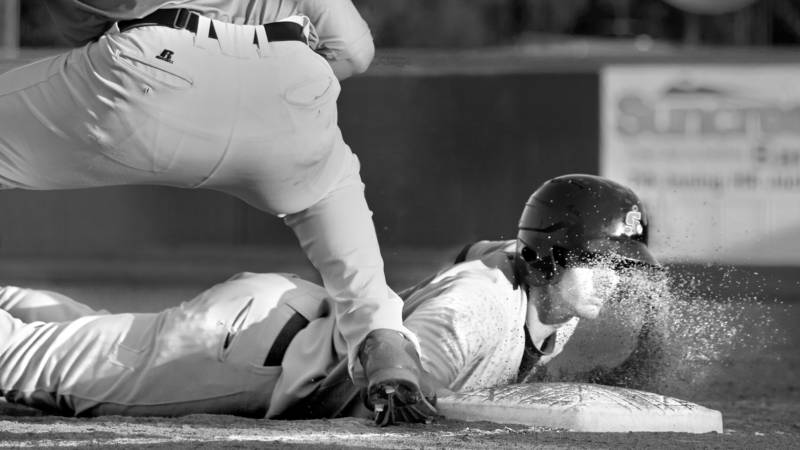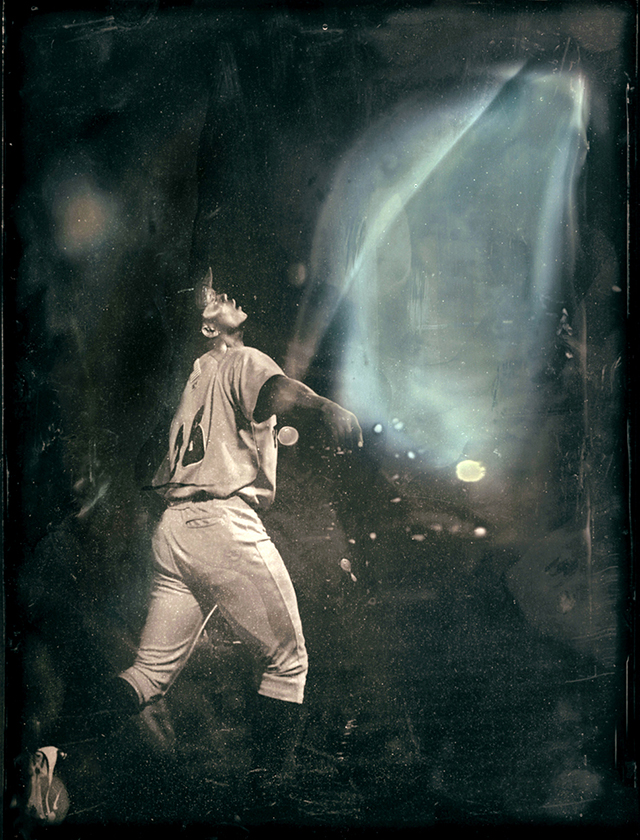Tucked away in the tree-lined hills of Berkeley, stationed among a compound of wood cottages, is Tabitha Soren’s darkroom: a converted garage that’s so cramped it would give anyone who’s claustrophobic the heebie jeebies. Inside, photo equipment and boxes of prints are piled onto shelves, marked with labels like “Billy Beane” and “BLANTON.” And on the day I visit, there are so many pictures of baseball players on display, one might think Soren was a fanatic. (She is not.)
She was once a rabid music fan; as she puts it, she used to be able to rattle off facts like the name of the newest keyboardist in Yes or the bassist for ACDC on command. That’s why she fit in so well as a reporter and anchor on MTV News, she says. But inside the darkroom, only a short stack of CDs from bands like the Alanis Morrisette, the Beastie Boys and David Bowie hint at her first career, which had her interviewing rock stars and politicians in front of millions of Gen X-ers and Y-ers for almost ten years.

“The MTV thing is complicated. Nobody in a second career wants to be defined solely by their first career,” Soren says. “But in my case, I wouldn’t be taking pictures if I hadn’t learned what I learned from making television.”
She gave up her MTV job in 1997 for a fellowship at Stanford University. There, she was allowed to take any classes she wanted, and she found herself spending more and more time in the art history and studio art departments. Burned out on her life in front of the camera, she realized she wanted to be behind it.
“I fell in love with something else,” Soren says. “After doing television since I was 18 years old, I wanted to do something new and live in California.”

In 2003 her husband, author Michael Lewis, began covering the Oakland Athletics, gathering research for what would become his bestselling book Moneyball. Soren, who had begun her editorial photography career by then, was with him when the team’s rookie class began spring training. Though she’s not a fan of baseball, when she saw the hope in the eyes of the 21 players vying to join the A’s, she committed herself to documenting their careers.



